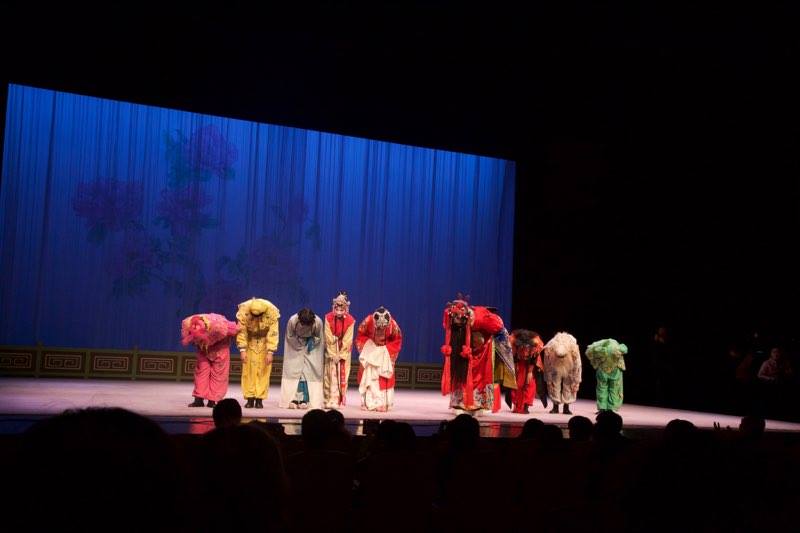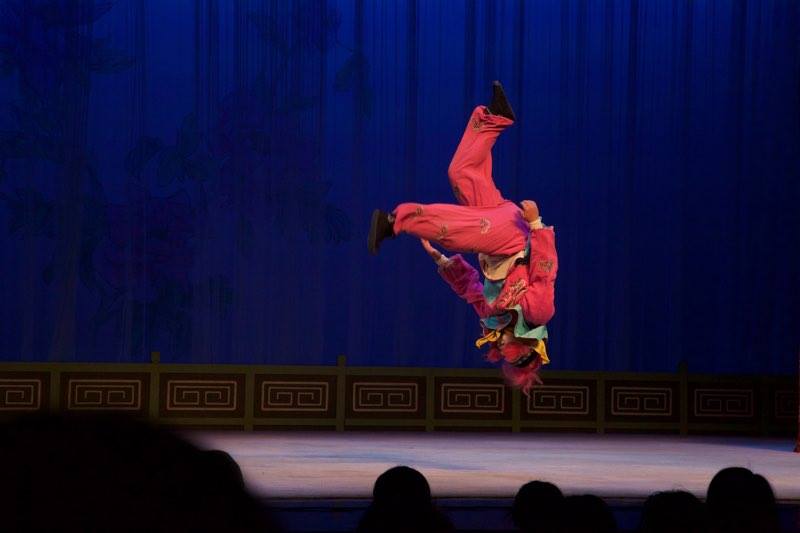
Yesterday night we went to watch a Kunqu Opera performance. The theatre was located in Suzhou, and for that reason, I was more excited to go. After reaching our destination I was surprised from the size of the audience. It was smaller than I expected.
The play was separated into three different individual stories with different plot and actors. This took me long to realise considering the language barrier that existed. And this may have been the greatest issue of the night except for a sudden turn of events by the end of the night.
A few remarkable notices from all three stories.
Since I didn’t know the stories, I couldn’t keep up the plot and therefore I cannot comment on the connection between action and meaning correctly.
Sleeves
One thing that captured my attention from the beginning of the performance was the unique sleeves the costumes had but more importantly their use. All of the actors played with their sleeves; as in they used their length to hide their hands and create shapes with them (An example of that could be the gesture of pleading from a female actress. This made the plea more intense, even and powerful.) or uncovered their hands to show the delicacy and be more precise (An example of this one would be when they were showing the direction or wanted to support their words with gestures that showed delicacy.).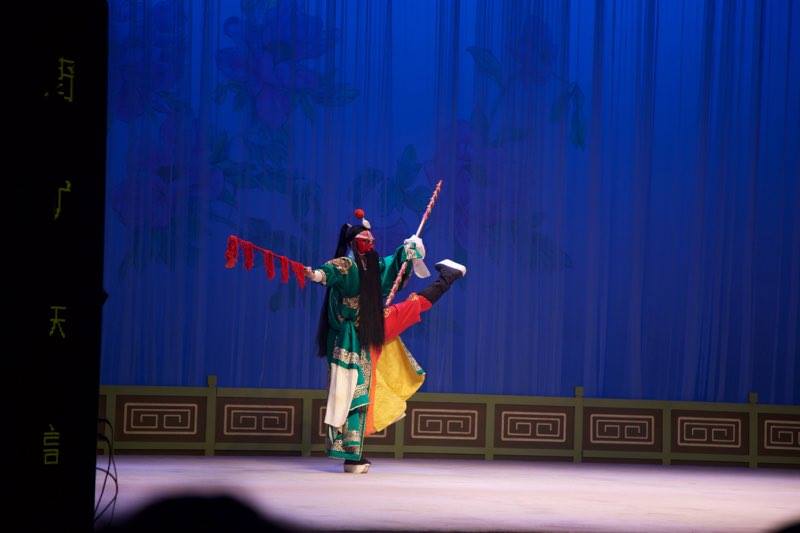
Emperor’s shoes
An element that I found extraordinarily unique and cumbersome, is the emperor’s and main ghost’s pair of shoes. They wore boots whose sole was almost 10-inches making their movement admirable because of the difficulty. The shoes added height to the actor making him superior to the others. The shoes were only worn by people of great importance. For the first one it was the male emperor and for the last one, it was the main ghost, played by a really famous performer as I figured out.
Story
From what I picked up, the first story was about a woman falling deeply in love with a man who then leaves her saying that he doesn’t and her to start doing greater things and become an emperor. It frustrated me how they portrayed women as a highly emotional being that falls quickly in love and only cares about marriage, but men ignore women as they can control their feelings and reach for ‘greater’ things in life such as becoming an emperor and a leader.I realised that this is how people’s mindset was in ancient China.
Sound elements
The sound effects and elements were of great importance in the show. When the actors made movements, their kinesis was emphasised by the sound. This sound was a thud and its pace was increasing and decreasing according to the circumstances. For example, when they were walking the pace of the music was fast as their walking pace. But when they posed or there was tension built up and we were waiting for the release, the thud was slower and the time in between each noise was increased.
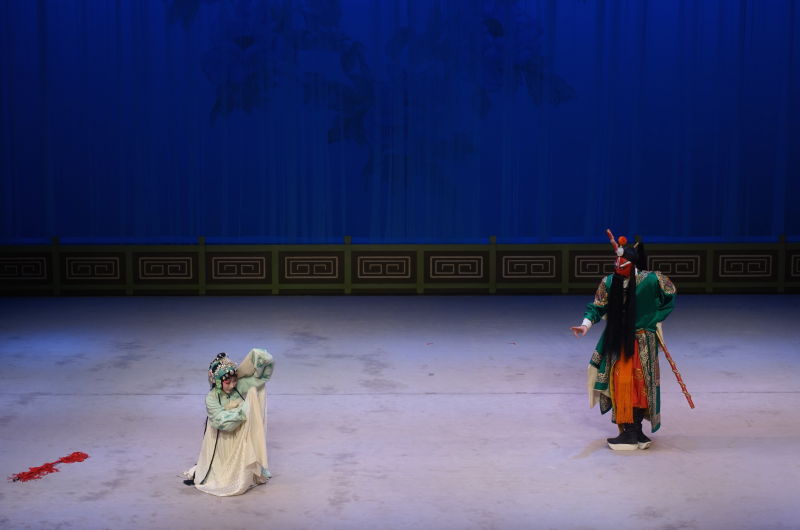
Always holding something in their hands
All of the performers when speaking, standing or performing held something in their hands. In most cases they held fans. They used them to show where they were heading towards and add a special element. In other cases, it was a stick with fringes or without. This stick represented also movements of a horse depending on the angle it was held by.
First girl;poor – diamonds on head
The financial and socioeconomic background of the characters was not reflected in their appearance. The greatest example to prove this correct was during the first scene where the poor girl, falling in love with the emperor, was wearing diamonds on her hair.
Female role
In the first scene mostly, the female character was shown complaining and weeping when the male character was the one supporting her. Here we can see how women were portrayed as fragile and weak when men were strong and supporting. In the second story, the woman’s face was not shown, proving the importance and the power of beauty in a society like this. The reason why the second couple fell in love was nothing but external appearance.
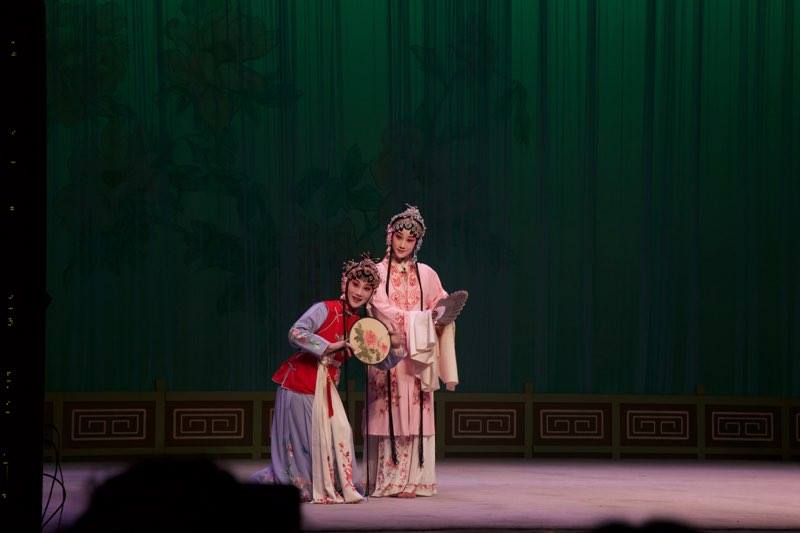
Hair
All of the actors were wearing wigs. The wigs’ length was more than one metre in every case. What’s worth noticing about this is that even the emperor was taking deep care of his hair showing how hair length was connected with beauty and authority. Therefore, the longer the hair, the greater the person.
In ancient China, they did not cut their hair. It would disrespect their parents if they did so. Cutting your hair would be equal to cutting your hair.
Eyes
Intensively staring happened at points when the actor sought for personal connection with the audience; especially after his entrance. Focus on the eyes was also achieved when during the “posing moments” (see below for more on that) the entire group of actors remained still including their stare, the only difference being the actor with most authority moving his eyes from right to left. This increased his sense of authority, engaged the audience and completed the picture by adding a more realistic element.
Face painting
An extremely important factor in completing the character’s image was the face painting we saw on his face. Each painting represented different things and usually was unique for each of them as it was reflecting their personality traits. A clarifying example would be at first; women’s makeup. Women’s makeup was emphasising their fair complexion achieved by white paint all over the face and their captivating rather fake glare, achieved by red paint framing the eyes creating at the same time a shape that flattered their eyes making them more appealing.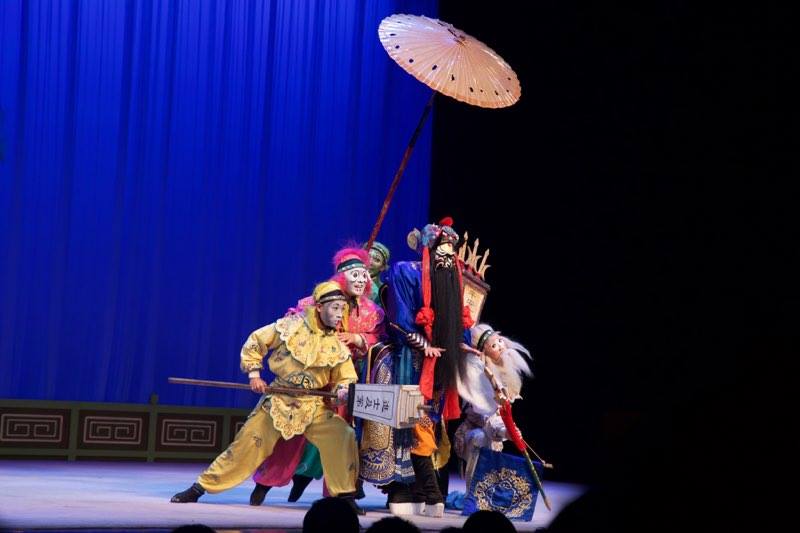
Posing
Lastly, it is worth noticing how the unrealistic factor of the performance was enhanced by what I call the “posing moments”. Every once in a while the characters posed by keeping their exaggerated movements still and proving their skills to the audience. This built the tension.
Colours
As Lester mentioned, the colour used to paint their faces was symbolic since ancient times and its symbolism can be explained below:
White; Sneaky
Red; Brave
Last one; Ugly and Courageous
Transformation of time and space
Going on circles represented a transformation in space and time.
Stock characters- Caricature
A stock character is a stereotypical person whom audiences readily recognise from frequent recurrences in a particular literary tradition. Stock characters are archetypal characters distinguished by their flatness. As a result, they tend to be easy targets for parody and to be criticised as clichés.
